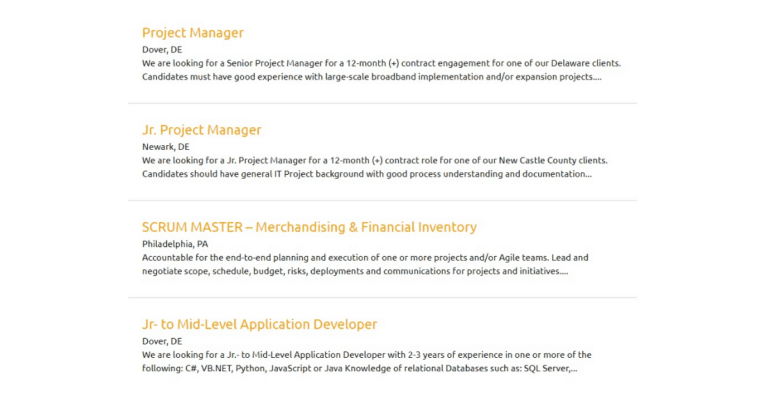2016 has been dubbed the year of the candidate. According to MRINetwork, a recruitment organization specializing in global research, 90% of recruiters believe that the job market is candidate driven. With the speed of the internet, and online postings, candidates are finding and filling roles faster than ever before. What does this mean for the employer? Well, it suggests that the hiring market is strong but that the competition for top talent has never been greater. Despite this, in a study conducted by Richard Curtin at the University
of Michigan at Ann Arbor and Brilliant, a staffing firm who partnered with Curtin, they found that “companies have a high percentage of unmet needs within their accounting, finance and IT
functions.” The long and short of it – with so much opportunity out there, there’s no time for a long and drawn out hiring process.
In this blog, we’ll be taking a look at 4 ways your organization can streamline its hiring process while still making great IT hires.
Make Sure You’re Ready to Hire – This is by far the most important step in the process. Before you even think about making a role public, you need to sit down with the key players on your team to make sure the role is properly defined. You don’t want to catch yourself looking for a needle in a haystack. For example, a common mistake many employers make is trying to fill a role vacated by an employee by looking for someone that has the departed employee’s exact skills/skill sets. Many times this is impossible to achieve because the only person who has those skill sets is the person who just vacated the role. It’s important to remember the skill sets the employee left with weren’t the same as when they were hired. So it’s imperative the team keeps that in mind when re-defining the current opening.
Even more important, though, is making sure you have the budget and financial approval for your position. Too often employers make positions public, find the right candidates, but are kept from making the hire because they don’t have the budget to do so. Then when they are able to free up the resources, they find that their candidate has already moved on to another position.
Don’t make these mistakes. Properly define your roles and make sure you have the proper resources available to you before you make your opportunity public.
Trust Your IT Partners – If you’re a company who uses outside recruiting/staffing firms, like PSCI, to find your candidates, you need to trust them. Not all staffing firms are created equal but the quality ones all come with a certain similarity – they qualify their candidates. Here at PSCI, we not only speak to our candidates before we submit them but we also put them through a thorough technical screening process. That way, our clients know that when they’re presented with a candidate from us they’ve already been properly vetted and screened.
This can save your team a considerable amount of time during the interview process. Knowing that each and every candidate you’re interviewing has already been qualified, all you need to make sure of is which one fits your team’s culture the best.
Consider Contract-to-Hire – There are a lot of overhead costs associated with making a full time hire so many employers want to make sure they’re crossing all their T’s and dotting all their I’s before making that offer. This is all perfectly acceptable except that in the interest of being thorough you’re also slowing the hiring process considerably. So in the essence of making a quicker hire, consider making your full time opportunity a contract-to-hire instead.
Not only is this option less risky but it also opens up a try and buy opportunity for the employer. You’re able to see firsthand if the employee is a culture fit as well as if they’re able to handle the work load. Once the contract is up it should be an easy transition to convert the ‘contractor’ into a full time employee.
Eliminate Multiple Rounds of Interviews – As we mentioned earlier, if you have trust in your IT partners, you should have confidence in the quality of candidates that you should be receiving. If that’s the case then there should be no need for multiple rounds of interviews. If you would like for the candidate to sit with different members of your team – which is completely fair – then schedule all the interviews to be held sequentially on one day or in a team interview setting.
In the essence of saving time, you should also consider video interviews. Not only does this show respect for the candidate’s time, keeping them from any type of travel, but in many ways it can accomplish what was being sought through a face to face interview. You’re able to place a face to a voice and you’re able to see how the candidate presents themselves in person, albeit through a screen.
So if you’re an employer looking to make a quick but great hire, please consider these 4 tips. What other ways can employers improve upon their hiring process?
Image courtesy of Sira Anamwong at FreeDigitalPhotos.net








